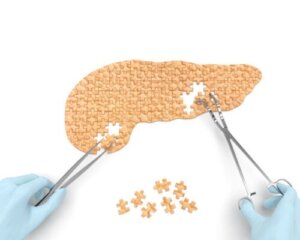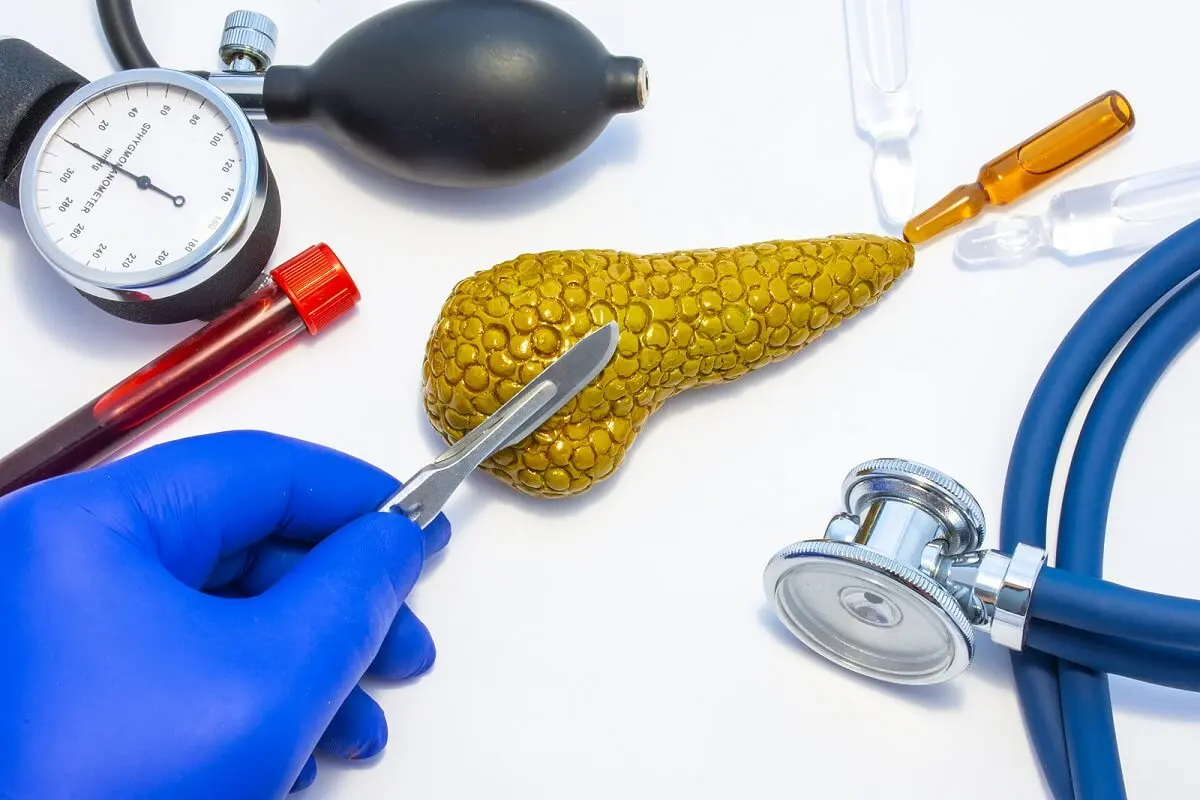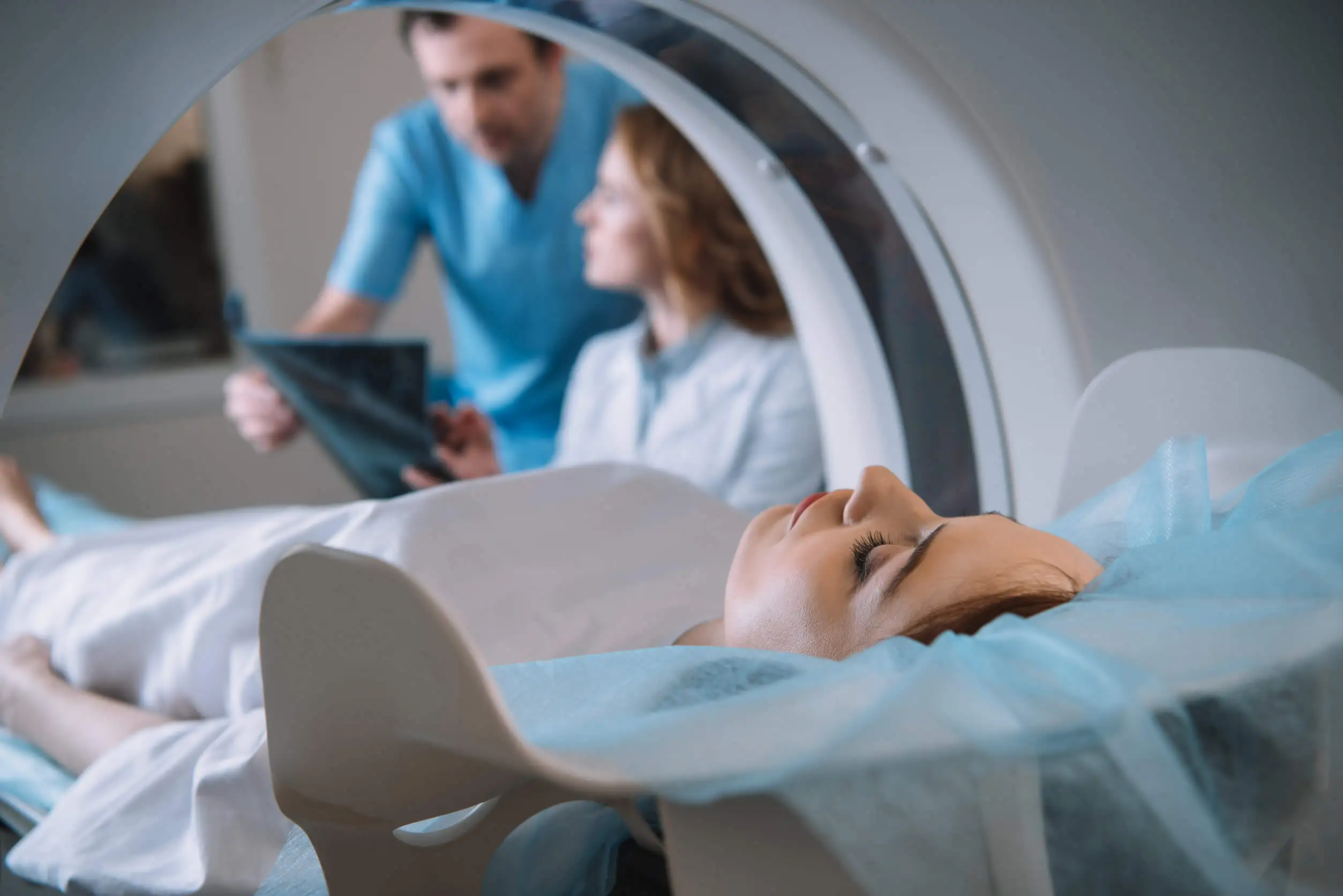Pancreatic Cysts: Causes, Symptoms and Treatment


Reviewed and approved by the doctor Leonardo Biolatto
The pancreas is a gland located behind the stomach, whose main function is to synthesize hormones related to glucose metabolism. It also releases enzymes involved in digestion. It can be affected by different pathologies that alter its function, such as pancreatic cysts.
A pancreatic cyst is a closed cavity filled with fluid that is covered by epithelial cells. They can be located anywhere in the pancreas and can be composed of different types of tissue. In addition, it’s important to note that they may be located either on the pancreas itself, or inside the organ.
Fortunately, most are benign, and don’t contain cancerous cells. However, a small percentage become malignant.
Types of pancreatic cysts
Pancreatic cysts can be divided into two main groups: pseudocysts and cysts per se. The main difference between the two is that the former aren’t covered with epithelial cells. Instead, they have a layer of fibrous tissue around them.
Pancreatic pseudocysts are the most common tumors in the pancreas, appearing in up to 90% of cases, according to some statistics. The remaining 10% is divided among the different types of pancreatic cysts:
- Serous cystadenoma: This is a benign tumor, and so the risk of cancer is very low. However, it has the capacity to increase in size, compress other organs and produce abdominal pain.
- Mucinous cystadenoma: This is a cyst that appears very frequently in the tail end of the pancreas. It has the capacity to become malignant, so it must be followed up appropriately.
- Papillary cystic tumor: Also known as Frantz tumor, this is a neoplasm that usually affects young women and has a low probability of becoming cancerous. It’s usually found in the tail section of the pancreas.
- Intraductal papillary mucinous neoplasm: This tumor is located in the main pancreatic duct, obstructing it in many cases. The neoplasm can be either precancerous or cancerous.

Read more here: The First Hormonal Symptoms of Pancreatic Cancer
Symptoms
Most people with pancreatic cysts are asymptomatic, so their diagnosis is usually made by chance. The symptoms that appear are nonspecific and are usually due to the compression of other organs. In this regard, some associated signs are as follows:
- Nausea and vomiting
- Persistent pain in the upper abdomen
- Jaundice or yellowish color of skin and mucous membranes
- Palpable mass in the upper abdomen
For its part, intraductal papillary mucinous neoplasm can also generate symptoms similar to those of chronic or acute pancreatitis. In addition, other symptoms may appear as the disease progresses, such as weight loss, dyspepsia, and anorexia. Some people even develop diabetes mellitus.
What can cause it?
Pancreatic cysts don’t usually have a specific cause. Pseudocysts may be related to pancreatitis or some other inflammatory process of the gland. This is because digestive enzymes, such as amylase, are activated and irritate the pancreas.
On the other hand, tumors can also be associated with rarer genetic pathologies, such as polycystic kidney disease or von Hippel-Lindau disease. In fact, studies have shown that 47% of people with the latter had pancreatic cysts.
Diagnosis
The diagnosis of pancreatic cysts is made by chance in many cases. In general, it’s common to detect the alteration when imaging tests are performed while looking for other pathologies.
Once the cyst is detected, the specialist should recommend other tests to study the characteristics. In addition, these will allow him/her to determine the best therapeutic conduct.
Some of the most useful tests are the following:
- Magnetic resonance imaging
- Computed tomography
- Abdominal ultrasound
- Endoscopic ultrasound
- Magnetic resonance cholangiopancreatography
- Endoscopic retrograde cholangiopancreatography (ERCP)
Magnetic resonance imaging is one of the imaging tests that offers the most information, as it detects small cysts and changes that suggest malignancy. Endoscopic ultrasound and ERCP are useful to differentiate between malignant and benign tumors because they allow doctors to take samples for biopsies.

Discover more here: The Differences Between a CT Scan and an MRI
Treatment of pancreatic cysts
The treatment of a pancreatic cyst will depend on its size, the symptoms it causes, and the possibility of malignancy. Most pseudocysts disappear on their own, so the approach is medical follow-up.
Drainage may be necessary when the cyst is very large or causes symptoms that are bothersome to the patient. Drainage of pancreatic cysts can be performed endoscopically, laparoscopically, or through the skin’s surface.
Surgical resection of the tumor will always be the preferred option in the case of large cysts or those with a clear risk of malignancy. All cyst cells should be removed during surgery to avoid relapse.
In the case of malignant tumors, chemotherapy can also be useful.
A pathology with a favorable prognosis
The prognosis of pancreatic cysts and pseudocysts is positive in most cases. Let us remember that these are pathologies that tend to be benign and disappear on their own. Moreover, complications, such as cyst rupture and portal hypertension, are very rare.
If you are diagnosed with a pancreatic cyst, the first thing to do is to remain calm. It’s a very simple condition to treat and isn’t usually life-threatening.
All cited sources were thoroughly reviewed by our team to ensure their quality, reliability, currency, and validity. The bibliography of this article was considered reliable and of academic or scientific accuracy.
- Iglesias J, Domínguez J. Quistes de páncreas. Rev. esp. enferm. dig. 2009;101(6):438-438.
- Charlesworth M, Verbeke CS, Falk GA, Walsh M et al. Pancreatic lesions in von Hippel-Lindau disease? A systematic review and meta-synthesis of the literature. J Gastrointest Surg. 2012;16(7):1422-8.
- Farrell JJ. Pancreatic Cysts and Guidelines. Dig Dis Sci. 2017 Jul;62(7):1827-1839.
- Moyer MT, Maranki JL, DeWitt JM. EUS-Guided Pancreatic Cyst Ablation: a Clinical and Technical Review. Curr Gastroenterol Rep. 2019 Apr 23;21(5):19.
- Megibow AJ, Baker ME, Gore RM, Taylor A. The incidental pancreatic cyst. Radiol Clin North Am. 2011 Mar;49(2):349-59.
- Ayoub F, Davis AM, Chapman CG. Pancreatic Cysts-An Overview and Summary of Society Guidelines, 2021. JAMA. 2021 Jan 26;325(4):391-392.
This text is provided for informational purposes only and does not replace consultation with a professional. If in doubt, consult your specialist.








